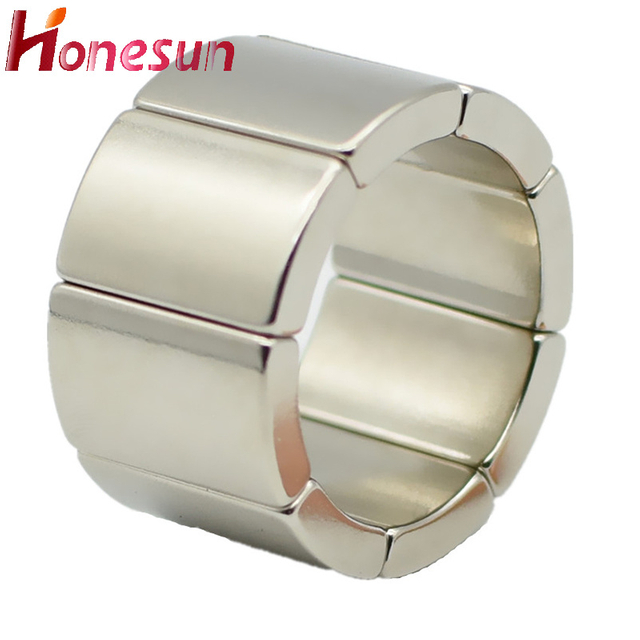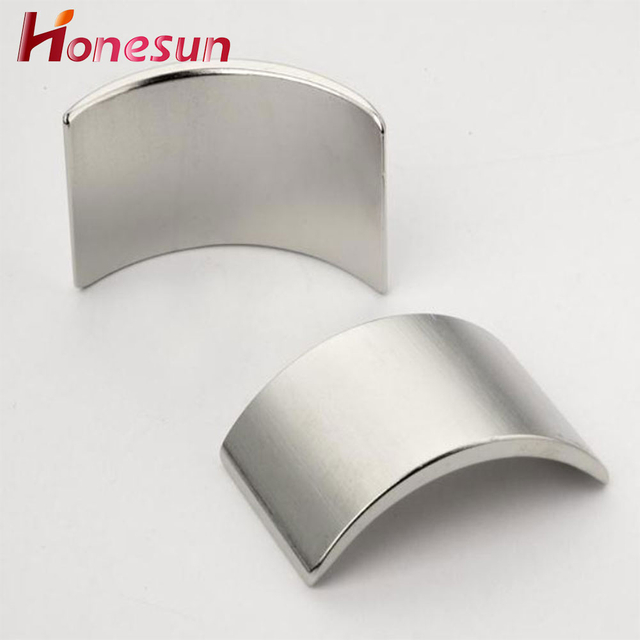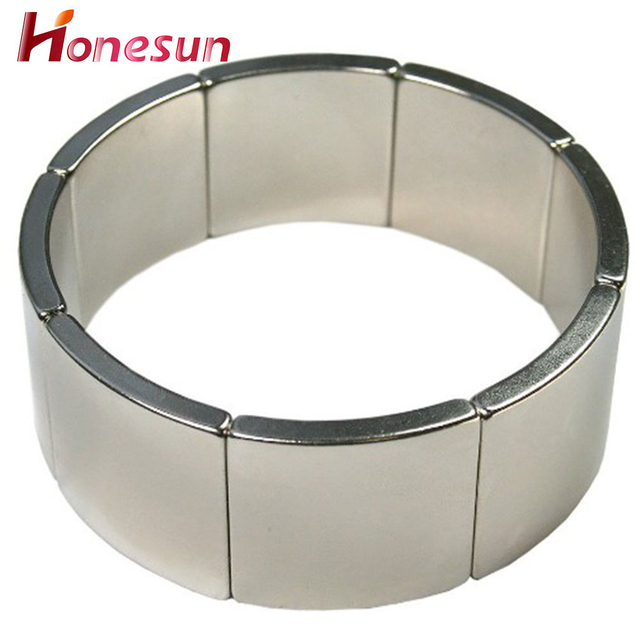| Availability: | |
|---|---|
| Quantity: | |
| Product Name | 4mm x 2mm neodymium magnets |
| Material | Neodymium Magnet/Permanet Magnet |
| Size | Various kinds or according to customers' request |
| Shape | Disc, Block, Ring, Countersunk, Segment, Trapezoid, Irregular shapes are available, Or Customized Shapes |
| Grade | N35-N52, N35M-N50M, N33H-N48H, N30SH-N35SH and so on |
| Tolerance in size | +/-0.05 mm |
| Direction of magnetisation | Through the thickness or through the diameter |
| Applications | 1. Electronic areas: speakers, headphones, acoustics, sensors and so on. 2. Motor areas: generators, servo motors, micro-motors, vibration motors, elevator motor and so on. 3. Clean Tech Energy: Water flow enhancement, wind turbines. 4. Health care: MRI, medical treatment equipment. 5. Other industries: electric doors and windows, electric vehicle, electric bicycles, computer, phone, boxes, magnetic tools, notebook and so on |



1.About 4mm x 2mm neodymium magnets production equipment
Neodymium magnets are a type of rare earth magnet that is made from an alloy of neodymium, iron, and boron. They are the strongest type of permanent magnet available and are used in a variety of applications, including motors, generators, and loudspeakers. The production of neodymium magnets requires specialized equipment, such as a vacuum furnace, a press, and a sintering furnace. The process begins with the mixing of the neodymium, iron, and boron powders in the correct proportions. The mixture is then placed in a vacuum furnace and heated to a high temperature. This causes the powders to melt and form a homogenous alloy. The alloy is then placed in a press and formed into the desired shape. Finally, the formed alloy is placed in a sintering furnace and heated to a high temperature, which causes the alloy to become a permanent magnet.
2.Are there any restrictions on the production or use of 4mm x 2mm neodymium magnets?
Yes, there are restrictions on the production and use of neodymium magnets. Neodymium magnets are subject to the European Union's Restriction of Hazardous Substances (RoHS) directive, which restricts the use of certain hazardous materials in electrical and electronic equipment. Additionally, neodymium magnets are subject to the International Maritime Organization's (IMO) International Maritime Dangerous Goods (IMDG) Code, which regulates the transport of hazardous materials by sea. Finally, neodymium magnets are subject to the United Nations' International Atomic Energy Agency (IAEA) regulations, which regulate the use of radioactive materials.
3.How do 4mm x 2mm neodymium magnets work?
We have established a good reputation and reliable partnerships within the 4mm x 2mm neodymium magnets industry. Neodymium magnets are permanent magnets made from an alloy of neodymium, iron, and boron. They are the strongest type of permanent magnet available and are used in a variety of applications. Neodymium magnets work by creating a strong magnetic field that attracts ferromagnetic materials, such as iron, nickel, and cobalt. The magnetic field is created when the electrons in the atoms of the neodymium alloy align in the same direction. This alignment creates a strong magnetic field that can attract ferromagnetic materials from a distance.

4.How are 4mm x 2mm neodymium magnets made?
Our products & services cover a wide range of areas and meet the needs of different fields. Neodymium magnets are made by a process called powder metallurgy. This process involves mixing neodymium, iron, and boron powder together and then compressing the mixture into a mold. The mold is then heated to a very high temperature, which causes the particles to bond together and form a solid magnet.
5.Can 4mm x 2mm neodymium magnets be used in high-temperature environments?
Our 4mm x 2mm neodymium magnets products undergo strict quality control to ensure customer satisfaction. No, neodymium magnets are not suitable for use in high-temperature environments. They can become permanently demagnetized if exposed to temperatures above their Curie temperature, which is typically around 80-200°C (176-392°F).
6.How do 4mm x 2mm neodymium magnets compare to traditional ceramic magnets?
Neodymium magnets are much stronger than traditional ceramic magnets. They are made from an alloy of neodymium, iron, and boron and are the strongest type of permanent magnet available. Neodymium magnets are much smaller than ceramic magnets and can generate significantly higher magnetic fields. They are also more expensive than ceramic magnets.

7.Are 4mm x 2mm neodymium magnets used in electric vehicles?
Yes, neodymium magnets are used in electric vehicles. They are used in the electric motors that power the vehicle, as well as in the batteries that store the energy. Neodymium magnets are also used in the regenerative braking systems of electric vehicles, which help to capture and store energy that would otherwise be lost as heat.
8.How do you demagnetize a Neodymium Magnet?
We focus on teamwork and communication to achieve common goals, We attach great importance to this detail. Neodymium magnets can be demagnetized by heating them to a temperature of around 200°C (392°F) for a few minutes. This will cause the magnet to lose its magnetic properties. It is also possible to demagnetize a neodymium magnet by exposing it to a strong alternating magnetic field.
9.Are 4mm x 2mm neodymium magnets safe to handle?
4mm x 2mm neodymium magnets is not a product only, but also can help you comes to money-making. Yes, neodymium magnets are safe to handle as long as they are handled with care. Neodymium magnets are very strong and can cause injury if not handled properly. It is important to keep them away from children and pets, and to avoid contact with other magnets or metal objects.

10.What types of coatings are used on 4mm x 2mm neodymium magnets?
Our mission is to provide customers with the best solutions for 4mm x 2mm neodymium magnets. Neodymium magnets are typically coated with a protective layer of nickel, copper, or zinc. Nickel plating provides the best corrosion resistance, while copper plating provides the best electrical conductivity. Zinc plating is the most economical option and provides good corrosion resistance.
11.Are 4mm x 2mm neodymium magnets used in headphones and speakers?
Our company has many years of 4mm x 2mm neodymium magnets experience and expertise. Yes, neodymium magnets are used in headphones and speakers. They are used to create a strong magnetic field that helps to produce a clear and powerful sound.
12.What are the potential future advances in Neodymium Magnet technology?
1. Improved magnetization processes: Developing new methods to increase the magnetization of neodymium magnets, such as using high-frequency alternating current or pulsed direct current, could lead to stronger magnets. 2. Improved coating processes: Developing new methods to coat neodymium magnets with protective layers could help to reduce corrosion and improve the longevity of the magnets. 3. Improved manufacturing processes: Developing new methods to manufacture neodymium magnets more efficiently and cost-effectively could help to reduce the cost of the magnets. 4. Improved recycling processes: Developing new methods to recycle neodymium magnets could help to reduce the environmental impact of the magnets. 5. Improved magnetic field control: Developing new methods to control the magnetic field of neodymium magnets could help to improve the performance of the magnets in various applications.

13.What are 4mm x 2mm neodymium magnets?
As one of the 4mm x 2mm neodymium magnets market leaders, we are known for innovation and reliability. Neodymium magnets are a type of rare-earth magnet made from an alloy of neodymium, iron, and boron. They are the strongest type of permanent magnet commercially available and are used in a wide variety of applications, including motors, generators, hard drives, and loudspeakers.
| Product Name | 4mm x 2mm neodymium magnets |
| Material | Neodymium Magnet/Permanet Magnet |
| Size | Various kinds or according to customers' request |
| Shape | Disc, Block, Ring, Countersunk, Segment, Trapezoid, Irregular shapes are available, Or Customized Shapes |
| Grade | N35-N52, N35M-N50M, N33H-N48H, N30SH-N35SH and so on |
| Tolerance in size | +/-0.05 mm |
| Direction of magnetisation | Through the thickness or through the diameter |
| Applications | 1. Electronic areas: speakers, headphones, acoustics, sensors and so on. 2. Motor areas: generators, servo motors, micro-motors, vibration motors, elevator motor and so on. 3. Clean Tech Energy: Water flow enhancement, wind turbines. 4. Health care: MRI, medical treatment equipment. 5. Other industries: electric doors and windows, electric vehicle, electric bicycles, computer, phone, boxes, magnetic tools, notebook and so on |



1.About 4mm x 2mm neodymium magnets production equipment
Neodymium magnets are a type of rare earth magnet that is made from an alloy of neodymium, iron, and boron. They are the strongest type of permanent magnet available and are used in a variety of applications, including motors, generators, and loudspeakers. The production of neodymium magnets requires specialized equipment, such as a vacuum furnace, a press, and a sintering furnace. The process begins with the mixing of the neodymium, iron, and boron powders in the correct proportions. The mixture is then placed in a vacuum furnace and heated to a high temperature. This causes the powders to melt and form a homogenous alloy. The alloy is then placed in a press and formed into the desired shape. Finally, the formed alloy is placed in a sintering furnace and heated to a high temperature, which causes the alloy to become a permanent magnet.
2.Are there any restrictions on the production or use of 4mm x 2mm neodymium magnets?
Yes, there are restrictions on the production and use of neodymium magnets. Neodymium magnets are subject to the European Union's Restriction of Hazardous Substances (RoHS) directive, which restricts the use of certain hazardous materials in electrical and electronic equipment. Additionally, neodymium magnets are subject to the International Maritime Organization's (IMO) International Maritime Dangerous Goods (IMDG) Code, which regulates the transport of hazardous materials by sea. Finally, neodymium magnets are subject to the United Nations' International Atomic Energy Agency (IAEA) regulations, which regulate the use of radioactive materials.
3.How do 4mm x 2mm neodymium magnets work?
We have established a good reputation and reliable partnerships within the 4mm x 2mm neodymium magnets industry. Neodymium magnets are permanent magnets made from an alloy of neodymium, iron, and boron. They are the strongest type of permanent magnet available and are used in a variety of applications. Neodymium magnets work by creating a strong magnetic field that attracts ferromagnetic materials, such as iron, nickel, and cobalt. The magnetic field is created when the electrons in the atoms of the neodymium alloy align in the same direction. This alignment creates a strong magnetic field that can attract ferromagnetic materials from a distance.

4.How are 4mm x 2mm neodymium magnets made?
Our products & services cover a wide range of areas and meet the needs of different fields. Neodymium magnets are made by a process called powder metallurgy. This process involves mixing neodymium, iron, and boron powder together and then compressing the mixture into a mold. The mold is then heated to a very high temperature, which causes the particles to bond together and form a solid magnet.
5.Can 4mm x 2mm neodymium magnets be used in high-temperature environments?
Our 4mm x 2mm neodymium magnets products undergo strict quality control to ensure customer satisfaction. No, neodymium magnets are not suitable for use in high-temperature environments. They can become permanently demagnetized if exposed to temperatures above their Curie temperature, which is typically around 80-200°C (176-392°F).
6.How do 4mm x 2mm neodymium magnets compare to traditional ceramic magnets?
Neodymium magnets are much stronger than traditional ceramic magnets. They are made from an alloy of neodymium, iron, and boron and are the strongest type of permanent magnet available. Neodymium magnets are much smaller than ceramic magnets and can generate significantly higher magnetic fields. They are also more expensive than ceramic magnets.

7.Are 4mm x 2mm neodymium magnets used in electric vehicles?
Yes, neodymium magnets are used in electric vehicles. They are used in the electric motors that power the vehicle, as well as in the batteries that store the energy. Neodymium magnets are also used in the regenerative braking systems of electric vehicles, which help to capture and store energy that would otherwise be lost as heat.
8.How do you demagnetize a Neodymium Magnet?
We focus on teamwork and communication to achieve common goals, We attach great importance to this detail. Neodymium magnets can be demagnetized by heating them to a temperature of around 200°C (392°F) for a few minutes. This will cause the magnet to lose its magnetic properties. It is also possible to demagnetize a neodymium magnet by exposing it to a strong alternating magnetic field.
9.Are 4mm x 2mm neodymium magnets safe to handle?
4mm x 2mm neodymium magnets is not a product only, but also can help you comes to money-making. Yes, neodymium magnets are safe to handle as long as they are handled with care. Neodymium magnets are very strong and can cause injury if not handled properly. It is important to keep them away from children and pets, and to avoid contact with other magnets or metal objects.

10.What types of coatings are used on 4mm x 2mm neodymium magnets?
Our mission is to provide customers with the best solutions for 4mm x 2mm neodymium magnets. Neodymium magnets are typically coated with a protective layer of nickel, copper, or zinc. Nickel plating provides the best corrosion resistance, while copper plating provides the best electrical conductivity. Zinc plating is the most economical option and provides good corrosion resistance.
11.Are 4mm x 2mm neodymium magnets used in headphones and speakers?
Our company has many years of 4mm x 2mm neodymium magnets experience and expertise. Yes, neodymium magnets are used in headphones and speakers. They are used to create a strong magnetic field that helps to produce a clear and powerful sound.
12.What are the potential future advances in Neodymium Magnet technology?
1. Improved magnetization processes: Developing new methods to increase the magnetization of neodymium magnets, such as using high-frequency alternating current or pulsed direct current, could lead to stronger magnets. 2. Improved coating processes: Developing new methods to coat neodymium magnets with protective layers could help to reduce corrosion and improve the longevity of the magnets. 3. Improved manufacturing processes: Developing new methods to manufacture neodymium magnets more efficiently and cost-effectively could help to reduce the cost of the magnets. 4. Improved recycling processes: Developing new methods to recycle neodymium magnets could help to reduce the environmental impact of the magnets. 5. Improved magnetic field control: Developing new methods to control the magnetic field of neodymium magnets could help to improve the performance of the magnets in various applications.

13.What are 4mm x 2mm neodymium magnets?
As one of the 4mm x 2mm neodymium magnets market leaders, we are known for innovation and reliability. Neodymium magnets are a type of rare-earth magnet made from an alloy of neodymium, iron, and boron. They are the strongest type of permanent magnet commercially available and are used in a wide variety of applications, including motors, generators, hard drives, and loudspeakers.
Honesun Industrial Co., Ltd. focuses on designing, researching, developing, manufacturing and selling Magnets and Magnetic Assemblies. With more than 15 years' rich experience and considerate services.we have been recognized as a reliable.



